In the heart of Assamese cuisine lies a culinary saga that unfolds like the vibrant landscapes of northeastern India. Rooted in tradition, the cuisine celebrates the artistry of blending rice, diverse fish, and indigenous greens. What makes it truly unique is the intricate dance of flavors and local herbs compose a nice melody of tastes. A touch of tanginess, an Assamese signature, elevates the culinary experience to new heights. This is more than a meal; it's a cultural canvas, each bite painting a story of heritage and culinary finesse that is distinctly Assamese.
Pitha
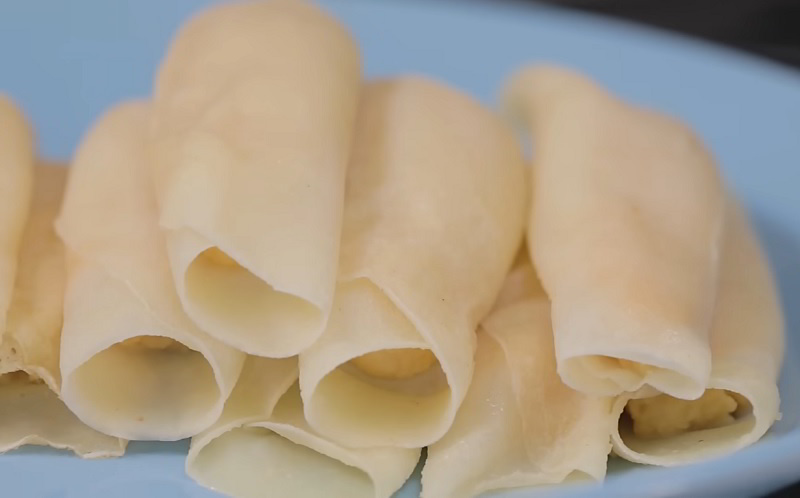
Pitha is a sweet or savory dish made from rice flour and occasionally filled with various ingredients, creating a burst of flavors and textures. The process of making Pitha involves steaming or frying the rice flour batter, resulting in a soft and spongy texture. The fillings can vary from jaggery, coconut, and sesame seeds for sweet Pithas, to spicy mixtures of lentils, vegetables, and spices for savory ones. Sweet Pithas like Til Pitha, Narikol Pitha, and Ghila Pitha are enjoyed during festivals and special occasions. They are often served with a drizzle of ghee or dipped in thick, creamy milk. Pithas like Tekeli Pitha, Paani Pitha, and Kholasapori Pitha are popular for breakfast or as a snack. The versatility of Pitha makes it a delightful dish that can be enjoyed at any time of the day. Whether sweet or savory, Assamese Pithas are a true representation of the region's culinary heritage and are loved by locals and visitors alike.
Luchi
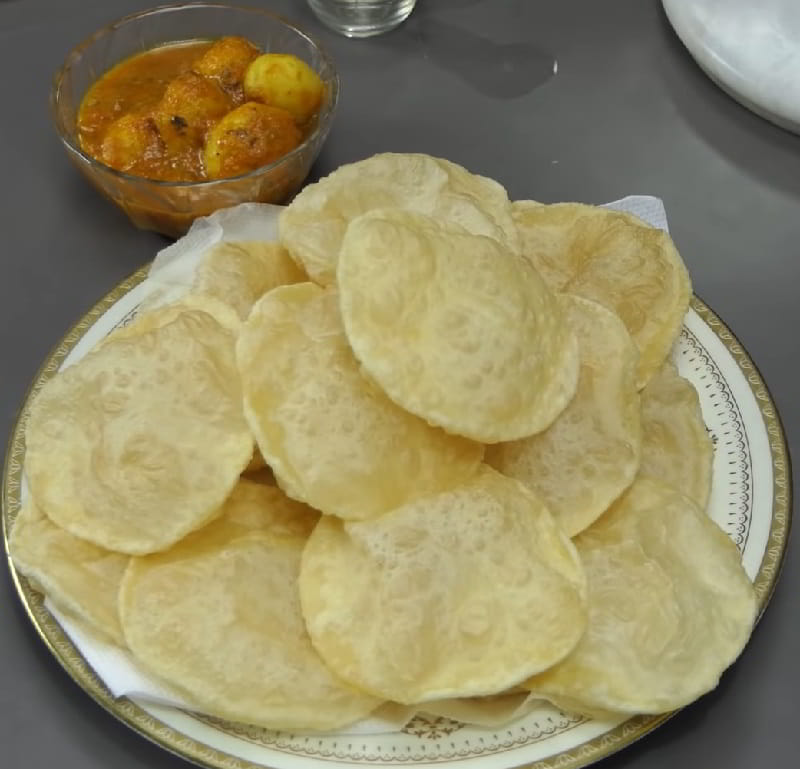
Luchi is a deep-fried bread made from refined flour and is similar to puri in other parts of India. Luchi is a versatile dish that can be enjoyed with a variety of accompaniments. The preparation of luchi involves kneading a dough made from wheat flour, salt, and water. The dough is then divided into small balls and rolled out into round, thin discs. These discs are deep-fried in hot oil until they become puffy and golden brown. The result is a crispy yet soft bread that is a delight to eat. Luchi is often served with aloo dum, a spicy potato curry, which is a classic combination. It can also be enjoyed with other vegetarian or non-vegetarian curries, such as cholar dal or mutton curry.
Panta Bhat
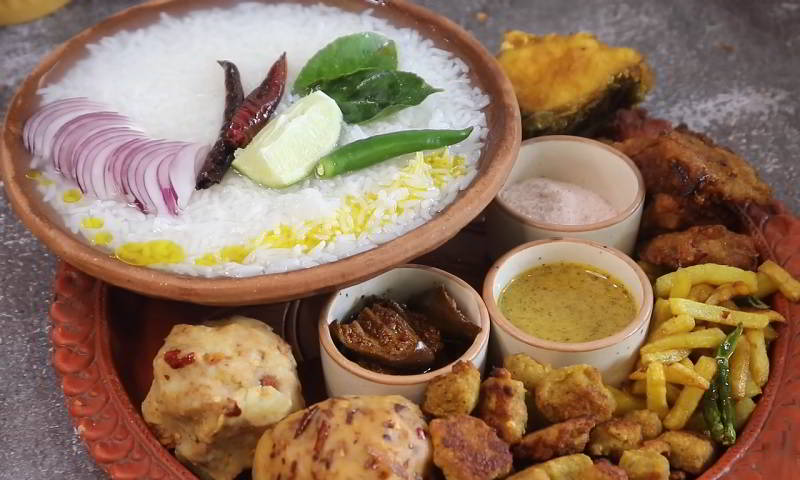
Panta bhat, a delectable rice dish, is effortlessly prepared by soaking cooked rice in water overnight, resulting in various flavorful renditions. After boiling rice conventionally, starch is strained, and the rice is left to cool at room temperature. Subsequently, cool water is added until it rises about an inch above the rice, covered lightly with fabric, and left for 12–24 hours. This process preserves its taste for 2 to 3 days. The liquid part, termed amani or torani, can be specially crafted. It's crucial to cover the dish during soaking to prevent contamination. Typically enjoyed in the morning, the soaked rice is paired with salt, lime, chili, and onions for added flavor. Often, it's accompanied by fried fish, vegetable curry, flattened rice, jaggery, and milk curd. Before consumption, excess water is discarded, and occasionally, edible oils are incorporated for richness.
Apo
-1706009204.jpg)
Apo is a rice-based beverage that is both refreshing and nourishing. To prepare Apo, rice is cooked until it turns brown or black. At times, cooked rice is mixed with the ash of paddy sticks to get that dark mixture. This mixture is evenly spread on a plate and is mixed with a fermenting ingredient and left to ferment for some time. The fermented mixture is then strained to obtain a smooth liquid, which is Apo. It is often served chilled and can be flavored with jaggery or a hint of spices like cardamom or cinnamon. Apo is not only a delightful beverage but also has several health benefits. It aids digestion, boosts immunity, and provides essential nutrients. It is also believed to have cooling properties, making it a perfect choice for the hot and humid climate of Assam.
Alu Chat
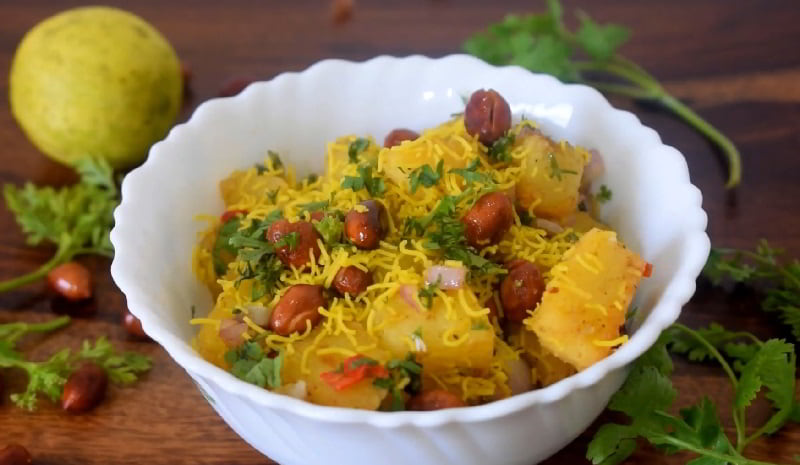
Alu chat is a popular dish that is loved for its tangy and spicy flavors. It is made using boiled potatoes, which are then chopped, fried, and mixed with an assortment of flavorful ingredients. The dish is usually served as a snack or appetizer. To prepare alu chat, the boiled potatoes are first peeled and diced. They are then mixed with finely chopped onions, tomatoes, green chilies, and cilantro. The mixture is then flavored with a variety of spices such as chaat masala, black salt, and roasted cumin powder. Tamarind chutney and mint chutney are also added to give the dish a tangy and refreshing taste. The dish can be garnished with sev (a crispy fried snack made from chickpea flour), pomegranate seeds, and a squeeze of lemon juice. The combination of flavors in alu chat is truly delightful, with the tanginess of the chutneys, the heat from the red chili, and the freshness of the cilantro. Alu chat is enjoyed by people of all ages in Assam and is often served at festivals, parties, and street food stalls.
Chunga Pitha

Chunga Pitha is a unique and delightful rice cake that involves the use of mulibash, a small bamboo variety. The bamboo possesses a special oily chemical preventing it from burning in the fire. The preparation involves stuffing sticky rice, rolled within banana leaves, into the bamboo tube. The bamboo, laden with the rice-filled banana leaf, is then set ablaze using straw, creating Chunga Pitha. The excessive juice within the bamboo results in the inner part of the tube being boiled in the fire's heat. This bamboo is a versatile ingredient used to craft various rice cakes. In some regions, an alternative method involves baking with coconut, milk, sticky rice, sugar, and rice powder to create delightful variations of Chunga Pitha.
Sulai

Sulai, a rectified spirit, is crafted in the Indian state of Assam. This clear and colorless alcoholic beverage is recognized as "tharra" in North India, and commonly referred to as country liquor in informal language. The production of Sulai typically involves the fermentation of molasses, although occasionally rice is used as well. This traditional brew carries cultural significance in the region, reflecting local practices and preferences. It shares similarities with other traditional spirits found in different parts of India and Nepal. The term "Sulai" encapsulates a locally brewed and cherished spirit that contributes to the rich tapestry of alcoholic beverages across diverse cultures in the Indian subcontinent.
Hutki Shira
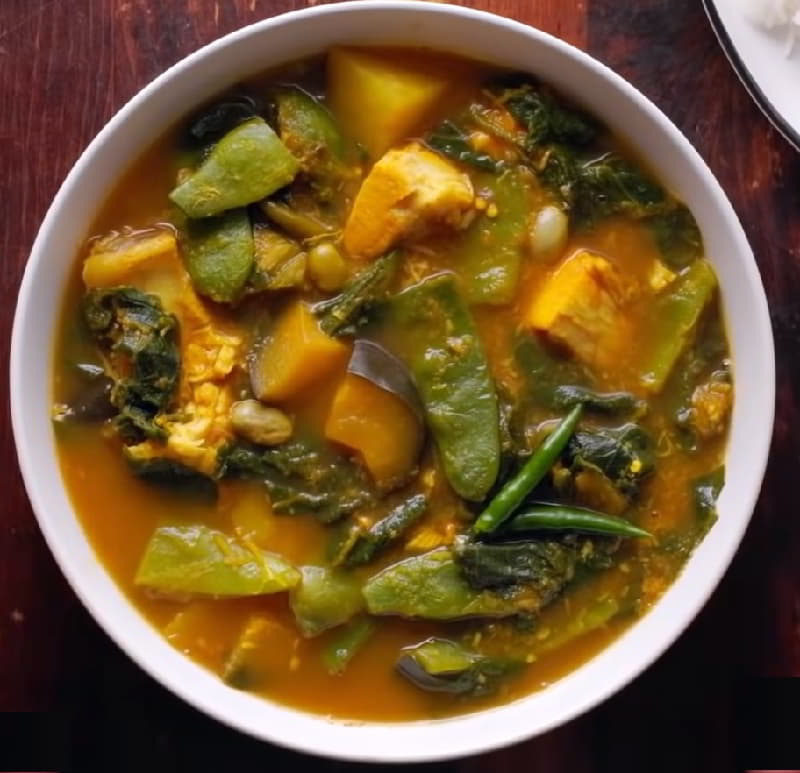
Hutki shira is a fermented fish curry that incorporates seasonal vegetables, leafy greens, and either fish or prawns, cooked without the use of oil or fat. The key ingredients include chili powder, hidol hutki, pureed onion, turmeric, potatoes, red pepper, crushed garlic, spinach, aubergine, salt, and other available seasonal vegetables. The preparation involves soaking the fermented fish in cold water before placing it in a large saucepan or cooking pot with ground spices, sliced onions, shrimp, salt, and garlic. The mixture is covered and cooked over high heat, stirred intermittently. Pumpkin and aubergine are later added, and enough water is incorporated to create a flavorful broth. In the final step, Naga chili is introduced, and the broth receives a gentle stir. Typically enjoyed over cooked rice, Hutki shira represents a delectable combination of fermented fish and seasonal vegetables in this unique curry.
Tusha Shinni
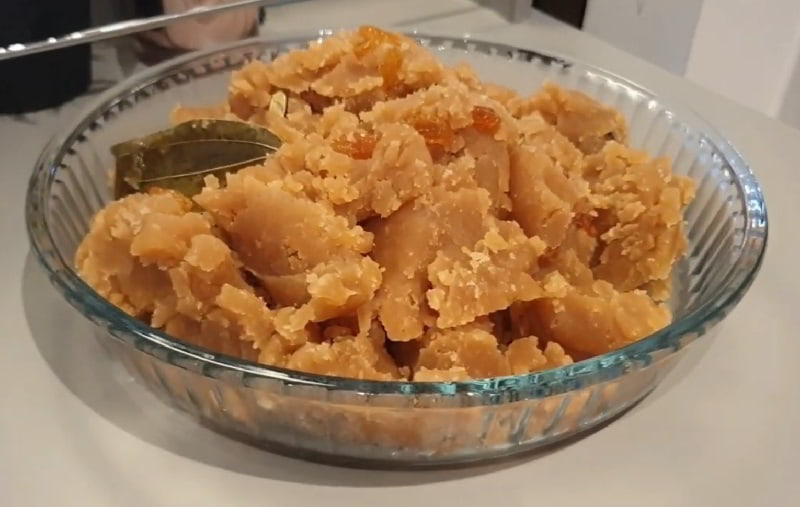
Tusha Shinni is a delicious and unique delicacy that holds a special place in Assamese cuisine. Made from flour, sugar, butter, and water, this sweet dish is often prepared during auspicious occasions and festivals. The process of making Tusha Shinni begins with boiling water and adding sugar. The flour is then heated in a pan until it gains a light-brownish hue after which butter is added to it. The sugar water is then added to the flour mixture. The whole thing is then cooked until the water is absorbed. The dish is further enhanced with the addition of cardamom powder, which adds a delightful aroma. Tusha Shinni is usually served warm and is enjoyed as a dessert or a sweet snack. It has a light texture and a comforting taste that is loved by people of all ages.
Beef Hatkhora
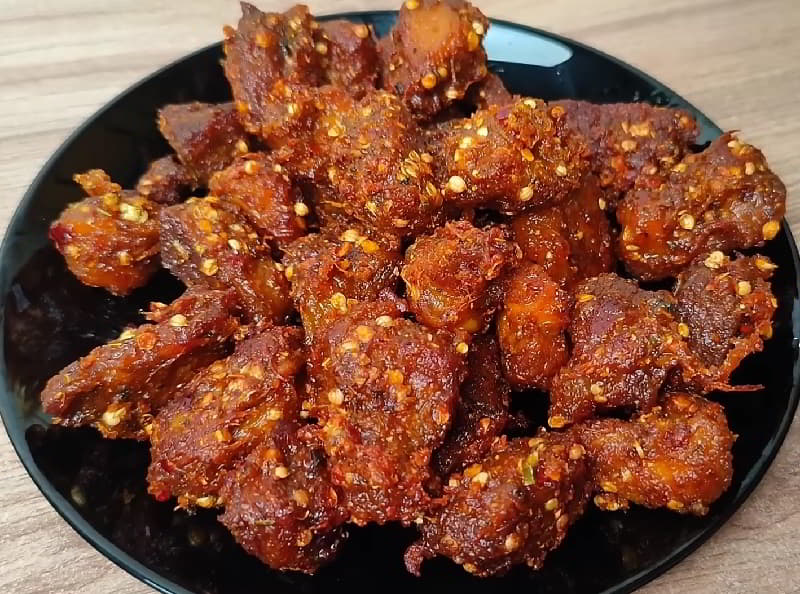
Beef Hatkhora stands as a beloved delicacy, enticing taste buds with its distinct flavor fusion. The preparation begins by heating oil in a spacious, heavy-bottomed, non-stick saucepan. Fenugreek seeds, Cinnamon, cardamom, star anise, and bay leaves are introduced, allowing them to release their aromatic essence as they swirl in the oil. Beef, salt, spices, and green chilies are stirred together, then covered. Hatkhora, cut into wedges and further chopped into smaller pieces, is added to the mix along with hot water. Once the curry reaches a boil, it is left to simmer. The final touch involves the addition of chopped coriander, enhancing the dish until the meat achieves the desired tenderness. This Assamese specialty captures a delightful medley of spices, Hatkhora, and succulent beef.
Handesh
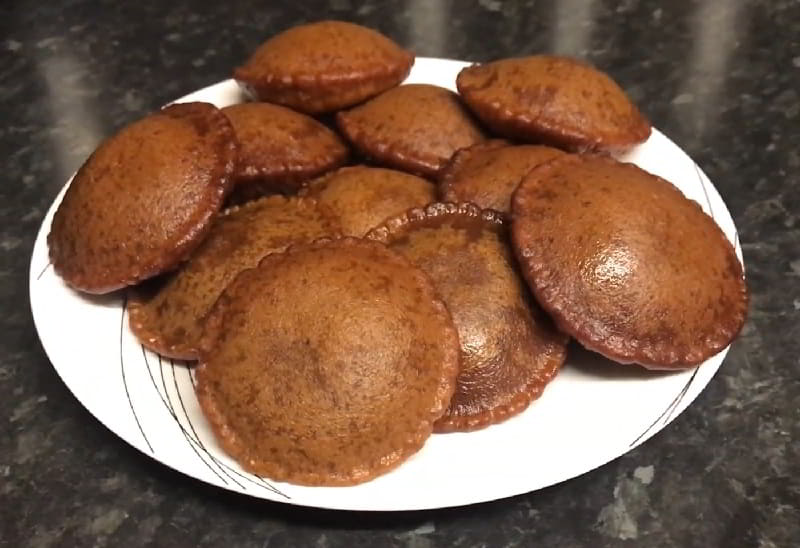
Handesh, also recognized as Tel Pitha in Assam, is a delightful deep-fried Pitha, offering a sweet and puffy treat suitable for both dessert and snacking purposes. This molasses and rice flour cake, deep-fried to perfection, holds special significance during the festive occasion of Eid, gaining popularity for its unique flavor. In earlier times, Handesh, like many other Pithas, was crafted using rice threshed with the help of traditional, unmotorized Dheki equipment. Beyond its festive association, Handesh serves as a versatile snack, perfect for pairing with tea. Its appeal extends to various special occasions, including naming ceremonies and wedding festivities, where it is cherished for its delectable taste and cultural significance.
Onla
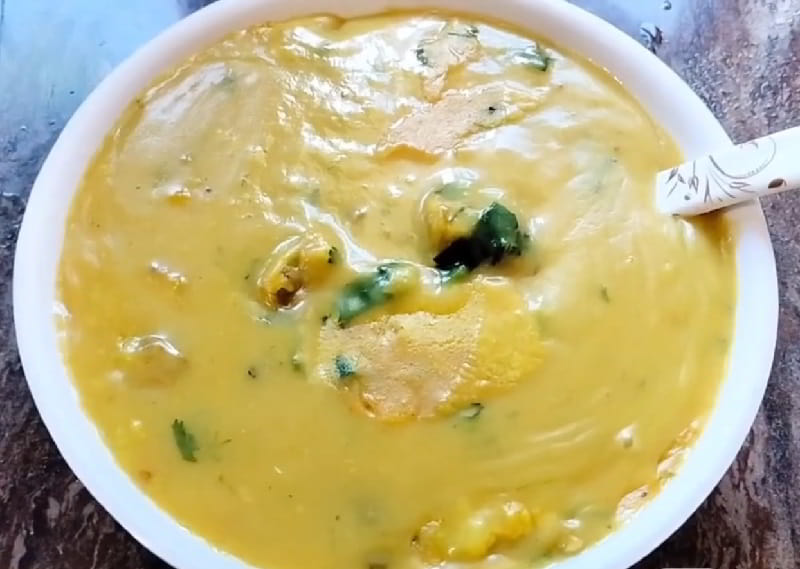
Onla is crafted from a blend of rice flour, khardwi (alkali), and an assortment of spices. The versatility of Onla is evident as it accommodates variations with the inclusion of chicken or pork. Notable renditions include Aouwa Mewa Onla, featuring bamboo shoots with rice flour, Sojona Bilai Onla with drumstick leaves, Sobai Onla incorporating black lentils, Mwithru Bibar Onla highlighting papaya flower, Mwithru Onla with papaya fruits, and Thaigir Onla featuring elephant apple with rice flour. Beyond these herb-infused varieties, Onla can also take a simpler form by incorporating chicken, pork, or fish without additional herbs or vegetables. This flexibility in ingredients showcases Onla's adaptability and diverse options within Assamese culinary traditions.
Posola
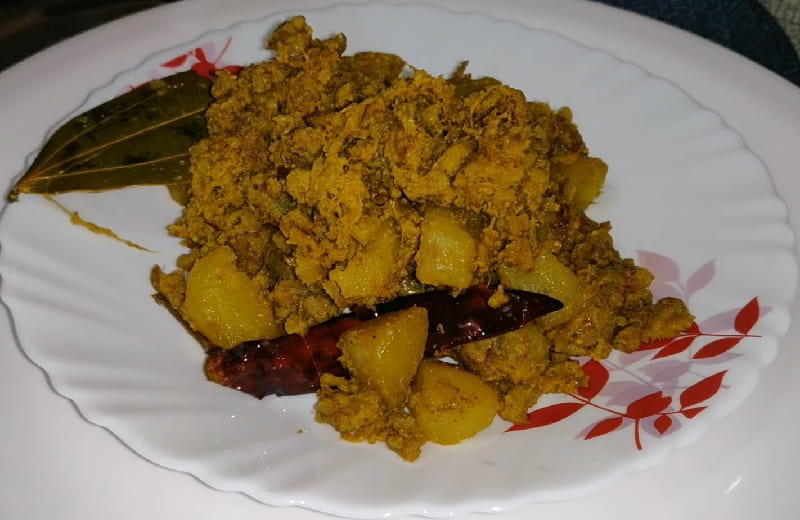
Posola, a delicacy in Assamese cuisine, features the inner portion of banana shoots as its main ingredient. The preparation involves peeling off the bark and cutting the tender inner part of the banana stem into small pieces. In a kadhai, a mixture of onions, mustard seeds, cumin seeds, garlic, and fenugreek seeds is fried in oil until they splutter. The banana stem pieces are then introduced into this aromatic blend and simmered along with hot water. As the water gradually evaporates, the dish achieves its readiness, presenting a delectable fusion of flavors and textures. Posola showcases the culinary creativity in Assam by utilizing the often-overlooked inner part of banana shoots to create a flavorful and nutritious dish.
Khardwi

Khardwi, an alkaline liquid integral to the cuisine of the Bodo people of Assam, is derived as the filtrate from burned dried banana stems, bamboo, coconut coirs, or potato plants. Its distinct taste, resembling strong soda, adds a unique flavor when used in small quantities as a key ingredient in gravies. Particularly favored among the Bodo community in Bodoland, Assam, Khardwi holds a significant place in Bodo cuisines. It plays a crucial role in the preparation of various dishes, including sojona bilai (green leaf vegetables) kharwi, mwitha bangal (green leaf vegetables) kharwi, lafa (green vegetables) kharwi, as well as other green leaf kharwi-based dishes. Additionally, Khardwi contributes to the creation of curries such as onla, sobai kharwi, showcasing its versatility in enhancing the culinary landscape of Assamese cuisine.






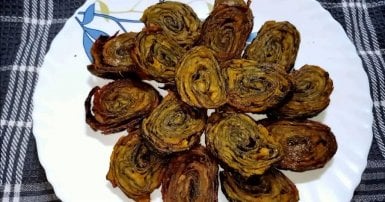
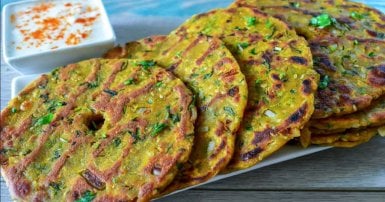
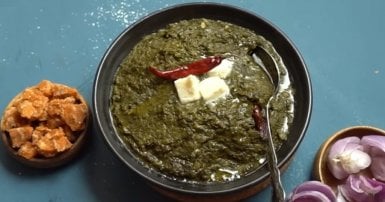
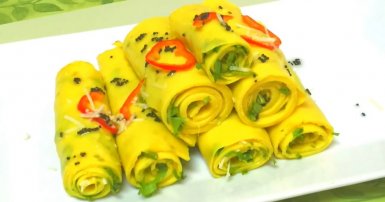
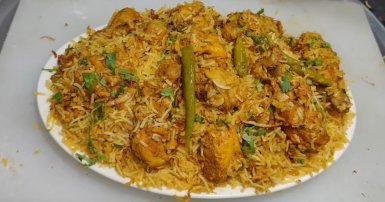
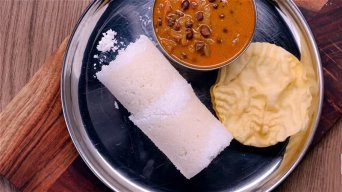

-1709813013.jpg)


